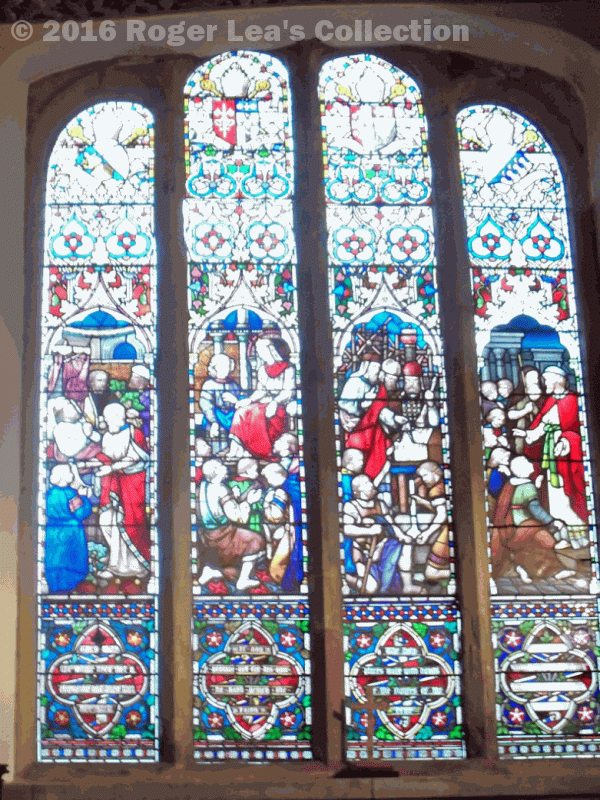The east window of the Vesey Chapel in Sutton Parish Church was installed in 1870, and is by the firm of Ballantyne of Edinburgh. It is known as the Bishops Window, because each of the four panels celebrates a bishop who had a Sutton connection.
Third from the left is the Bishop Hacket window, referring to the Rev. John Hacket who became Bishop of Lichfield in 1661. He was responsible for the restoration of Lichfield Cathedral after the damage it suffered during the Civil War, when Parliamentary artillery destroyed the central spire and battered the walls, while the Royalists stripped the roof of lead to make into cannonballs for their guns. The Cathedral was neglected during the Commonwealth period, when the Puritans abolished bishops, and by 1661 weather and thieves had reduced it to a ruin. Bishop John Hacket immediately set about the rebuilding, raising funds from local gentry and using some of his own fortune; he was able to reconsecrate the restored cathedral on Decmber 24th 1669. In the Bishops Window his work at Lichfield is likened to that of Joshua, Zerubabbel and Haggai who are shown engaged in the rebuilding of the Temple in Jerusalem (Haggai chap. 1) Above are the arms of Lichfield impaling Hacket, the scroll reads “The holy places made with hands are the figures of the true”(Hebrews chap 9 v. 24)
Bishop Hacket was not a local man and the connection with Sutton is tenuous, based on a distant relationship with John Addys of Moor Hall. However, his son Andrew married Mary Lisle, the heiress of Moxhull, and settled there, adding the Moxhull estate to his own considerable fortune. The Belfry is on the site of old Moxhull Hall, and the Moxhull lands extended over several parishes, including some Sutton property. This Andrew Hacket was the first of five successive Andrew Hackets of Moxhull, although Andrew Hackett II did not immediately succeed as he had an elder brother, Lisle Hackett; he styled himself Andrew Hacket of Grays Inn.
Andrew Hacket III married the daughter of Richard Scott of Little Aston, and took the title Andrew Hacket of Moxhull and Little Aston. In 1763 he was in possession of considerable property in Sutton according to an estate survey of that date; he died in 1774. Andrew Hacket IV was married twice, first to the daughter of Lord Leigh of Stoneleigh and secondly to the heiress of Francis Beynon Esquire, all adding to the Hacket estates and wealth. Andrew IV’s brother John inherited Moor Hall from his great-uncle John Addys. Andrew IV had retired to his house at Stratton Place, Northampton by 1803, leaving his heir Andrew Hacket V to style himself “of Moxhull Esquire”. Andrew Hacket IV died in 1808, and his brother John Addys Hacket died in 1810; in 1810, Francis Beynon Hacket, brother of Andrew V, inherited the Moor Hall estate and other Sutton property from his uncle John. The residence of John and Francis at Moor Hall, descendents of the Bishop, justified the inclusion of Bishop Hacket in the Bishops Window.

